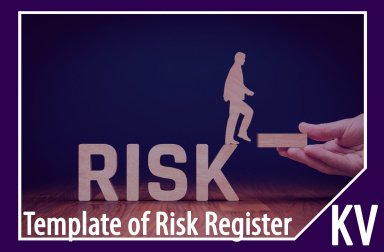
Last version published: 07/05/2020 16:00
Publication number: ELQ-12534-2
View all versions & Certificate

Template of Risk Register
A Risk Register for preventing risk by promoting change
Further information
Objectives of Risk Register are as below:
Risk Register covers risks of Business Risk, Regulatory and Compliance Risk, Legal Risk, Operational Risk, Strategic Risk, Environmental and Safety Risk.
Risk Register enables a company to brainstorm and identify all possible and potential risks and subsequently associated components against said identified risks (such as Risk Value, Impact, Control or Mitigating measures, Risk Owner etc.)
A risk register is the baseline document for the process of managing risk. It is a means of visualizing a company’s risks within a table or template so that risks can be better understood and dealt with by a Management Team. It allows risks, their likelihood and preventive measures for each risk to be recorded
Whenever an important decision is made within a company, the risk register is referred to.
Whenever something unfamiliar is being dealt with within a company, again the risk register should be referred to.
This is how the risk register is used, as a familiar tool that any member of a company can come back to ensure they can make the right decisions with a clear and focused mindset and without the need for a boss or authoritative figure being at hand. It therefore also reduces the time needed for teams to carry out tasks, improving the efficiency and productivity.
Risk Registers become more and more effective as they are used more frequently within a company. Information about the uncertainty of a previous risk would allow a Management to make a more educated decision about how to deal with the risk, therefore increasing their own knowledge about these risks.
Template of Risk Register applied is best for Proactive and Forward looking Management of organization.
Documentation of Risk Register serves as an attempt to reduce the likelihood of the risk occuring or the impact if the risk does occur. This places a mechanism in place to collect potential risks and map out a path to get operations of organization on track in case of risk become realities.
The best example of contingency can be considered as COVID19 situation across globe and complete lock-down of economy due to the same. However, identification of such potential or probable risks (which is RISK OF CRISIS MANAGEMENT) enable organization to manage such unforeseen events in a better manner. The documentation of risk is vital for success of company / organization since it gives a single place to identify the risk, note its history—from where it first occurred to where you finally resolve it—and even tag the risk to the person who identified it and owns its management. By documenting this process in a register, you’re less likely to lose track of risk over the operations of organization / company, which means the risks aren’t turning into real issues that are running rampant out of sight and threatening the success.
Not Applicable






